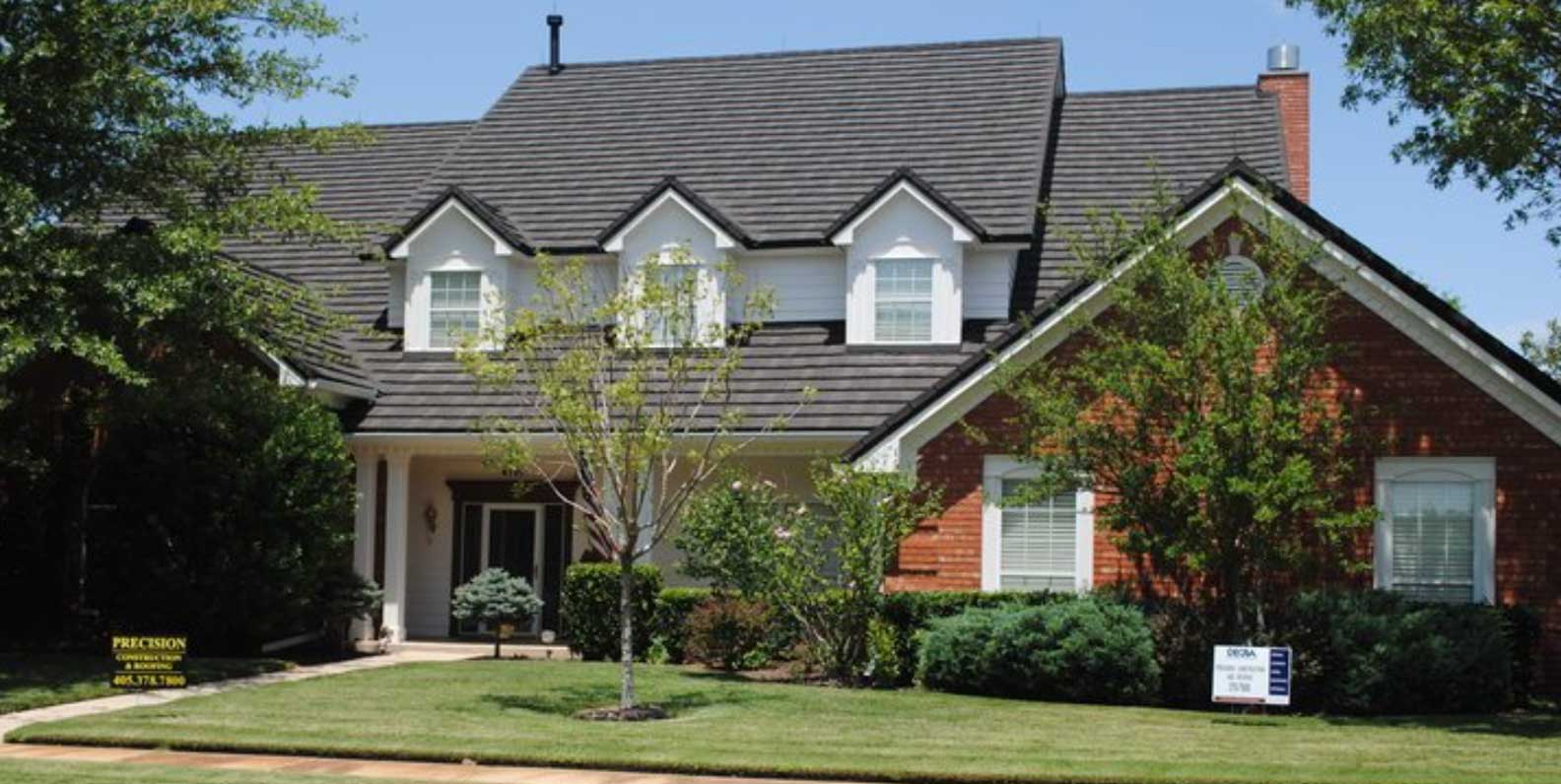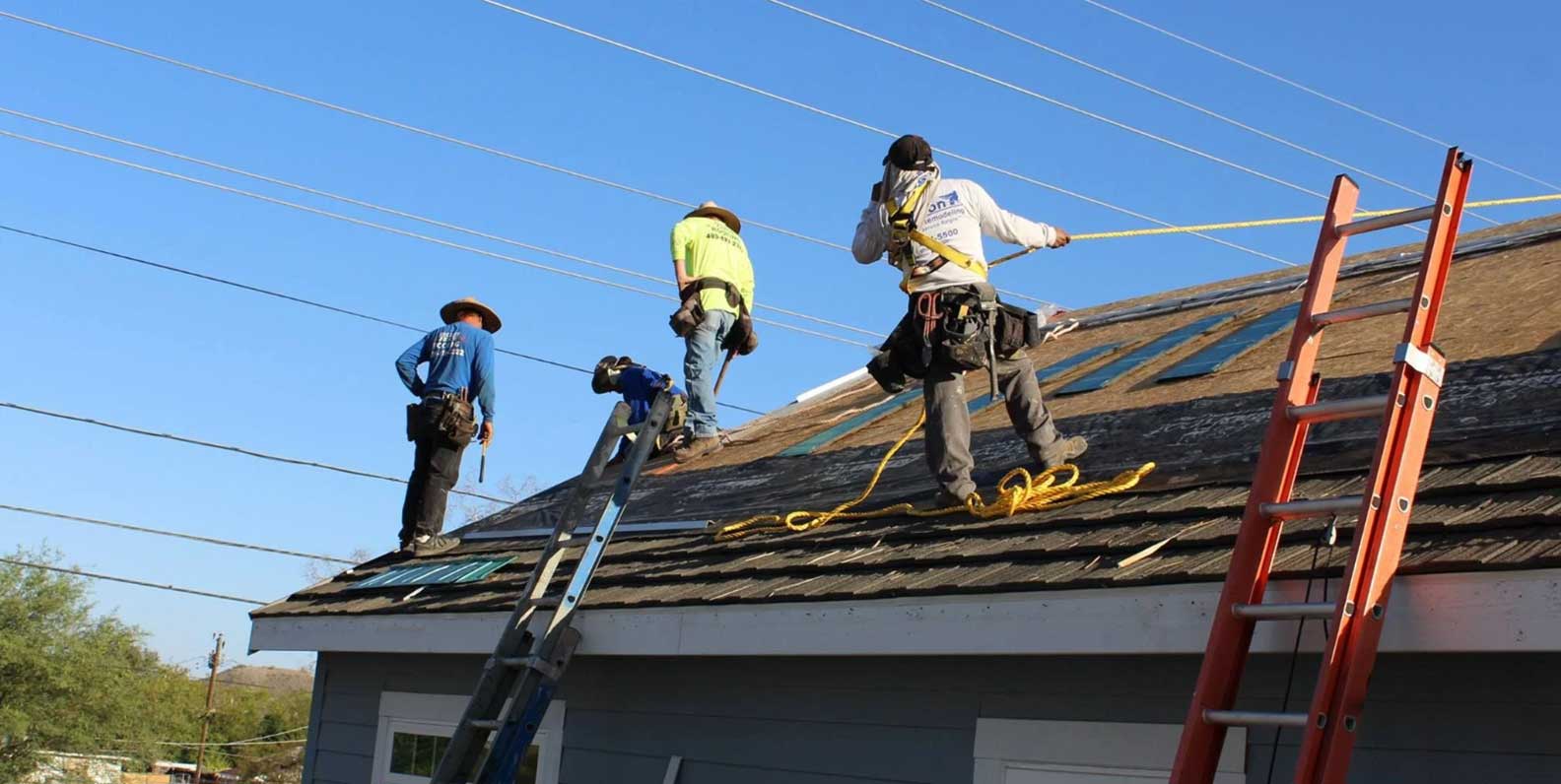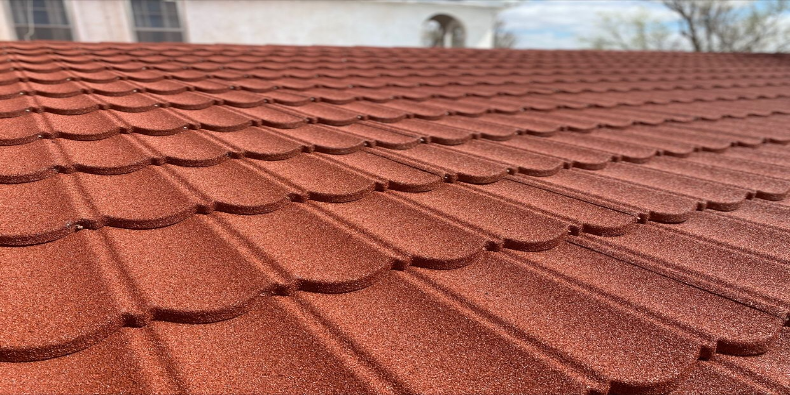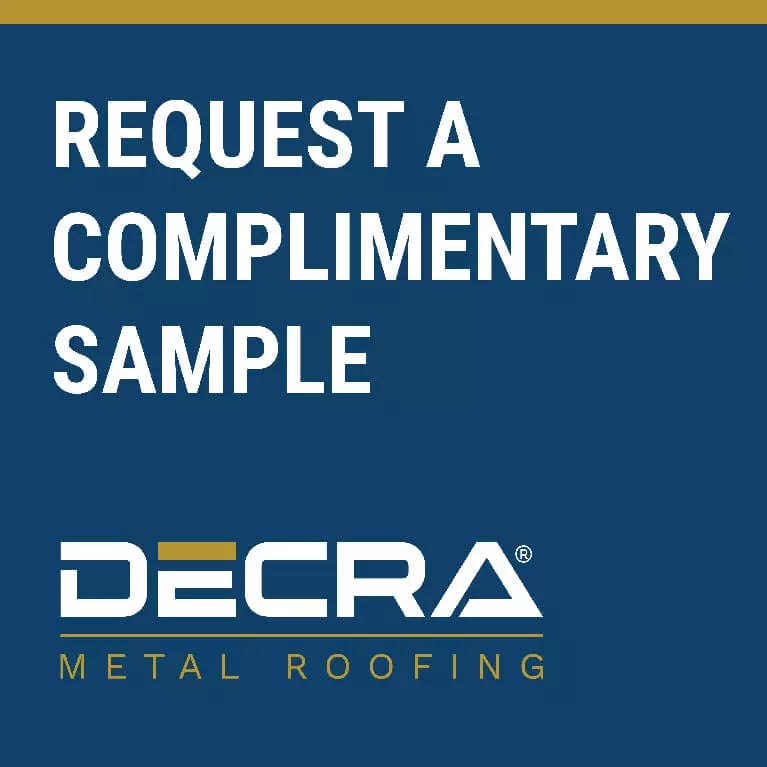Even at the highest end of the real estate spectrum, homes are encumbered with less than optimal roofing systems. Traditional roofing materials like asphalt, tile and wood have limited lifespans and substantial shortcomings when it comes to durability.
When homeowners decide to upgrade their roof, the most common question is, “What type of roof is best for my home?”
Since your roof serves as a barrier against fire, hail, ice, rain, snow and wind, there’s a lot riding on this investment. Roofing choices run the gamut, from heavy asphalt shingles to fragile clay tiles. And while all roofing materials offer some level of protection, certain materials–like stone-coated metal–provide more value than other materials.
Combining durability, longevity and versatility, metal roofing is rapidly emerging as a leading choice among homeowners nationwide. Consider the following factors when deciding what roofing material is best for your roof replacement or remodel.
Re-Roofing vs. Roof Replacement
Re-roofing is when a layer of new roofing material is placed over the existing roof. Roof replacement is when the old roofing materials and underlayments are completely stripped from the roof, exposing the deck.
Re-roofing is the fastest and most cost-effective way to upgrade your roof.
DECRA's ultra-lightweight stone-coated metal roofing systems can eliminate the need for a complete tear-off of the existing roof when it is still in serviceable condition. Other roofing materials, like asphalt shingles which tip the scales at 45,000 pounds, are simply too heavy to be considered a viable option for a re-roof.
In fact, if building codes allow, DECRA roofs can be installed directly over asphalt shingles.
Make sure you are aware of your options when it comes to re-roofing to see if a lightweight and durable product like DECRA Metal Roofing can be considered.
Protection Against the Elements
What are common weather conditions in your area? Homeowners in Texas, for example, typically look for roofing materials that provide added protection from hail impact, whereas homeowners on the California coast need a roof that can withstand the salty ocean air.
It’s important to consider the climate conditions of your region before remodeling your roof as things like fire, hail, ice, rain, snow, and wind all have the potential to damage and shorten the lifespan of your new roof.
Fire
All city, state and county building codes require minimum standards for fire resistance depending upon the building type. The UL 790 (ASTM E 108) Standard Test Methods for Fire Tests of Roof Coverings rates roofing material performance when exposed to fire sources originating from outside the building. To meet UL standards, roof coverings must provide a degree of protection against flame penetration to the underlying deck and the attic space without producing flying embers, or slipping from their installed position. Roofing materials are then classified with three fire ratings based on UL test performance.
- Class A: Such materials have proven themselves effective against the most severe fire testing. They provide the best protection against flame penetration as stand-alone roofing products with excellent resistance to surface flame spread without the need for chemical treatments or extra underlying roofing materials.
- Class B: Such materials are effective against moderate fire exposure. Wood shakes and shingles must be impregnated with fire-retardant chemicals to meet Class B requirements and Class A can only be earned with extra materials required for "by assembly" fire ratings.
- Class C: Such materials are effective against light fire exposure only. This includes reconstituted wood products such as plywood and particleboard.
While some asphalt shingles and clay tiles carry a Class A fire rating, they result in much heavier roofing profiles requiring sturdy supporting deck structures and additional construction costs. Wood shakes usually fall under Class C. DECRA Metal Roofing products carry the highest Class A Fire rating to protect your home from the threat of fire.
Plus, homes with a DECRA roof have been untouched when neighboring houses burnt to the ground, thanks to the fire-resistant properties of metal.
Hail and Storm Debris Impact
Just walking on a clay tile roof for maintenance can lead to fractured tiles, so you can imagine the damage that hailstones at high-velocity winds can cause. Wood shingles and shakes fare better, but as wood ages it becomes more brittle and can split, making the roof more susceptible to hail damage and wind uplift. Similar to wood, asphalt shingles initially fare well against hail, but shingles wear out quickly and become increasingly susceptible to damage from small hailstones.
DECRA has the highest possible hail UL2218 Class 4 impact rating and is warrantied for hailstones up to 2.5 inches in diameter. This is ideal for homes in hail-prone regions.
Ice and Snow
Have you ever noticed how ice dams form at a roof’s eave? This happens when heat loss through the roof melts snow on its surface. The meltwater then flows to the eave overhang where it refreezes. This ongoing process causes ice to build up and create a dam that prevents water from properly draining off the roof. Consequently, pooled water can back up and go under the roofing system to cause cracks, leaks and other issues. This can shorten the lifespan of traditional roofing products due to constant expansion and shrinkage.
DECRA products are non-porous, making them an ideal roofing solution for cold weather climates because they resist expansion caused by freeze and thaw cycles.
Wind Uplift
Asphalt, tile and wood have significant shortcomings when it comes to wind. Wood shakes, for example, tend to split and loosen around the fasteners making them extremely prone to wind uplift. Easily fractured clay tiles are also highly prone to wind uplift, with few backed by any type of wind warranty. With repeated wet-dry cycles, asphalt shingles are prone to cupping, splitting, warping, delaminating and loosening around the fasteners, which can increase the risk for wind uplift.
DECRA uses a unique interlocking system to secure its profiles in place with corrosion-resistant screws to ensure that wind can’t penetrate the underlying deck. This resistance gives DECRA one of the highest wind uplift ratings on the market–so much so that DECRA products comply with the high-velocity hurricane zone requirements of Miami-Dade, Florida.
DECRA products are also backed by a warranty for winds up to 120 mph and are lab tested at twice that velocity.
Wind-Driven Rain
Traditional roofing materials that are prone to wind uplift also leave the roof deck vulnerable to wind-driven rain, or rain that is driven into your home by the wind. This force adds stress to the underlying structure of the roof, causing asphalt shingles and wood shakes to crack and warp.
DECRA has performed extensive wind-driven rain testing at speeds up to 110 mph to protect its roofing profiles against water penetration under the most extreme wind conditions.
If your home relies on asphalt shingles, clay tiles, or wood shakes to withstand any of the elements listed above, your home could be at risk for costly damage.
Metal roofing is one of the most impact-resistant options available on the market, which is why it has rapidly grown in popularity and become the second most popular roofing material in the country.
Roofing Colors, Styles and Textures
The goal with any renovation is to enhance the design of your home. And since your roof is one of the first things people see, you’ll want to choose a material that adds curb appeal without sacrificing durability or longevity.
DECRA Metal Roofing products combine the strength of multi-layered steel with acrylic bonded granular stone coatings to replicate the style of asphalt shingles, clay tiles, and wood shakes. This helps to retain the original elegance of your home without sacrificing on strength or style.
Our profiles also come in a wide range of colors, styles and textures that suit the most discerning of tastes. From DECRA Tile that brings the elegance of Spanish tile without the deficiencies of clay to DECRA Shake that provides rich appeal without the deficiencies of wood, our metal roofs can augment any color scheme or style. The versatility of stone-coating means that we can even create a custom color to perfectly suit the aesthetics of your home.
Read the Warranty
Many homeowners are lured by roofing warranties with promises of 20, 30 or 50 year guarantees, but it’s important to read the fine print.
DECRA’s Lifetime Limited Warranty comes standard on all of our products and is a clear reflection of our confidence in the quality of our stone-coated metal roofing products. Our products are warrantied for:
- Winds up to 120 miles per hour.
- Hailstones up to 2.5 inches in diameter.
What’s more, some roofing manufacturers do not allow warranty transfers. DECRA permits homeowners to transfer the warranty to a new owner within 20 years of the initial installation which can make for a strong selling point.
Calculate the Long-Term Value
Beyond that, you’ll also want to take into consideration the cost, immediate value and long-term value of each material when preparing for a roof renovation. While asphalt shingles are the cheapest roofing material on the market, you get what you pay for. Traditional asphalt roofing materials only have an estimated life expectancy of 12 to 20 years. And while you may pay less upfront, the costs of replacing the roof every decade or so as well as frequent maintenance quickly diminish the long-term value.
DECRA stone-coated metal roofs can last up to two to three times longer than traditional roofing materials like asphalt, tile and wood. Additional long-term value benefits include:
- Metal roofs can reduce cooling costs by up to 25%.
- A modern metal roof can increase home value by up to 6%.
- Homeowners who renovate their home with metal roofing are typically able to recoup an extremely high rate of the roof’s initial cost, 85.9% according to national averages, with homes in the Eastern states recouping up to 95.5%.
Plus, DECRA roofs can qualify for insurance discounts in many states. For example, in Texas a metal roof can even lower your homeowner’s insurance by up to 35%. (Check with your local insurance carrier for available discounts). These are just a few of the short- and long-term benefits of choosing metal roofing.
Upgrade to DECRA Metal Roofing
Whether you’re looking for protection from the elements or stunning designs, DECRA serves as your one-and-done roofing solution. Engineered to withstand nearly anything Mother Nature has to offer, a DECRA roof will protect your home with enduring elegance for decades. Our products have withstood the test of time and endured in some of the world’s harshest climates. As the original stone-coated metal roofing manufacturer, DECRA’s set the industry standard for quality and durability since 1957. If you’re looking for the best roofing material for your home, you’re looking for DECRA. Ready to upgrade to DECRA Metal Roofing? Contact one of our roofing advisors to get started.






